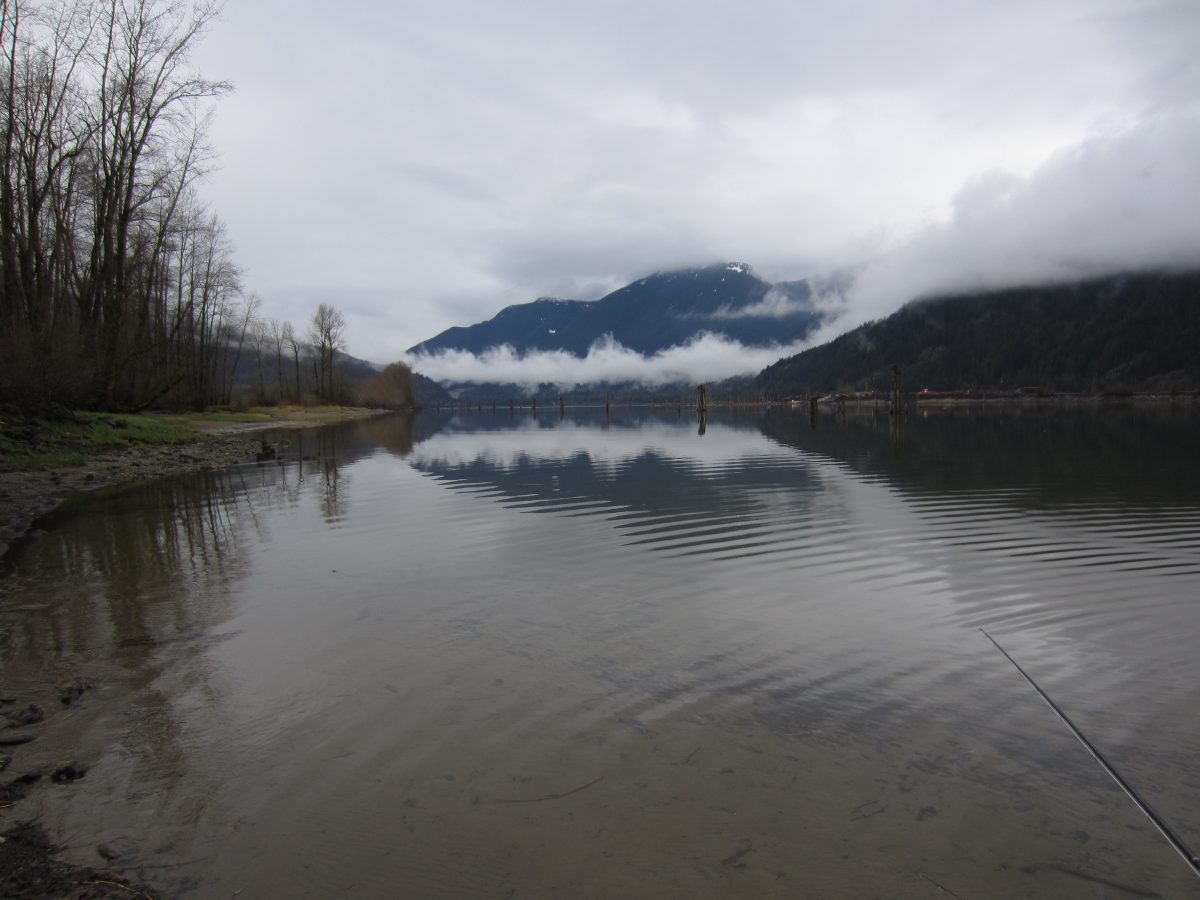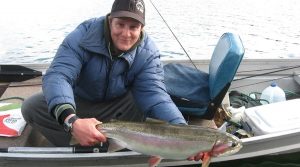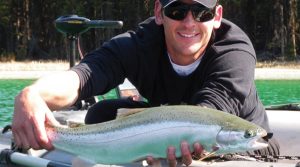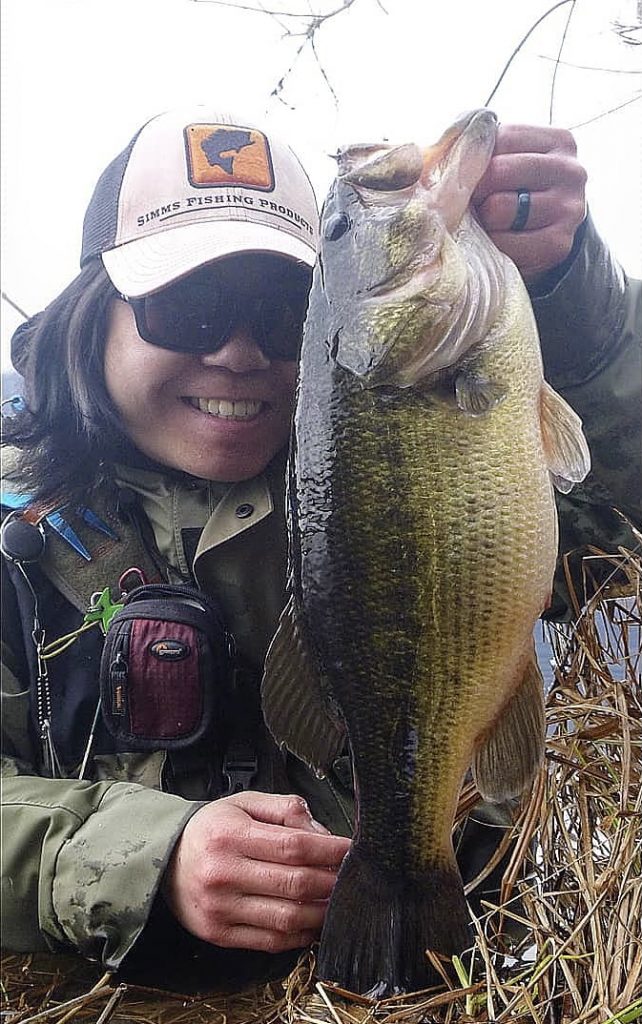OUTLOOK
Happy Long Weekend Everyone! It looks like we will see some rain but this is a good thing for the river fisherman. In this week’s report we have info on the Squamish, the Vedder as well as the Harrison and the Stave. The weather was a little interesting last weekend but we are hearing good cutthroat reports and with some overcast drizzly days this weekend all the rivers should fish well.
The big news this week has to be the saltwater chinook fishing regulations that were released. If you guys missed it, and you are planning on taking the boat out this weekend, be sure to familiarize yourself with the regulations. Be sure to check back for any updates and amendments to the regulations and make sure to read Jason’s Important Chinook Update that went out earlier today.
On a lighter note, if you are gearing up for lake fishing, Zach has a cool Interior lake fishing essentials gear check list and with things warming up, it is time to think bass fishing on the local lakes. Alex has a bass fishing primer piece.
Matt is back this week with a video version of the report when he goes over all the weather and details for fishing this long weekend so be sure to have a listen of that!
Easter Weekend Holiday Hours
Please note that the store is open regular hours on Easter Sunday but it is closed on Easter Monday.
INDUSTRY EVENTS AND UPDATES
We’re Hiring – Join Our Retail Team
As we head into the summer season we are looking for both full and part-time retail sales associates to join our team. Our retail sales associates are responsible for providing an unparalleled shopping experience by delivering legendary customer service and exceptional product knowledge to every customer. We are looking for a self-motivated team player with previous retail or related customer service experience and a passion for fishing to join our team.
If this is you read on for more details here.
CLASSES AND COURSES
Introduction to Fly Fishing Lakes
This course will give you an in-depth look at the fundamentals of fly fishing lakes. We explore equipment, techniques, major insect hatches and ideal lakes to begin with. You will learn all you need to plan your next successful lake trip to one of BC’s 5,000 lakes! This course is comprised of one 3hr evening seminar.
Date: Wednesday, April 21
Seminar Time: 6:30-9:30 pm
Cost: $50 per person
Introduction to Chironomid Techniques
This course is an introduction to chironomid fishing that will give participants the information needed to become an expert fly fisher.
Date: Monday, April 19
Seminar Time: 6:30-9:30 pm
Cost: $50 per person
FRESHWATER FISHING REPORTS
Chilliwack/Vedder River Fishing Report
The Vedder/Chilliwack system is running low and clear once again, and fishing has been a bit challenging as a result. The slight bump in water levels we saw after the rain did bring a few fish into the system, but it didn’t really come up enough to make a huge difference. Also, keep in mind that it is April, and it’s starting to get later in the Steelhead season, so you will see some darker fish around.
As far as gear is concerned, all the standard low water presentations will be good options at this point, but small spoons or blades can be effective when Salmon fry are around, so consider having a few in your arsenal.
Some new regulations came into effect on the 1st. Alex did a good job explaining them in last week’s report, so be sure to have a read of that if you missed it, but here’s a quick recap on what’s changing now: You can no longer fish upstream of the Tamihi bridge after March 31st, and you may retain two hatchery steelhead in the areas that remain open to fishing.
As always, you’ll want to cover water to find bitey fish, but don’t forget that fry will be hiding in the gravel close to shore, so try to limit the amount of time you spend wading in these areas… don’t be a fry squisher.
Taylor Nakatani
Squamish River Fishing Report
The Squamish has seen its ups and downs, with mostly downs this week. Low water has forced anglers to cover water and to hike around.
The water is starting to just barely turn green with clarity still being quite high. Hopefully we can get some spring melt soon with these warmer temperatures. Though the forecast calls for rain, temperatures are still pretty decent and should hopefully help bump levels.
With the spring weather starting to show itself there are fry around as well. Bulltrout and char, along with rainbows, will start to key in on them as a food source. Having a mix of fry patterns is a good idea, along with small spinners and spoons. There are some reports of trout around, along with some char this past week from a handful of anglers.
Swinging larger popsicle-style flies might not be a bad idea as well, as some larger trout may be enticed by them.
Hike around and explore- you’d be surprised at where fish may be found during these conditions.
Jordan Simpson
Harrison River Fishing Report
Cutthroat season is finally here. It’s still early, no doubt, but cutties are starting to be seen slashing at fry in the Harrison. The river is still low (6.3m) meaning that there’s a ton of great bank fishing opportunities when having a boat isn’t an option.
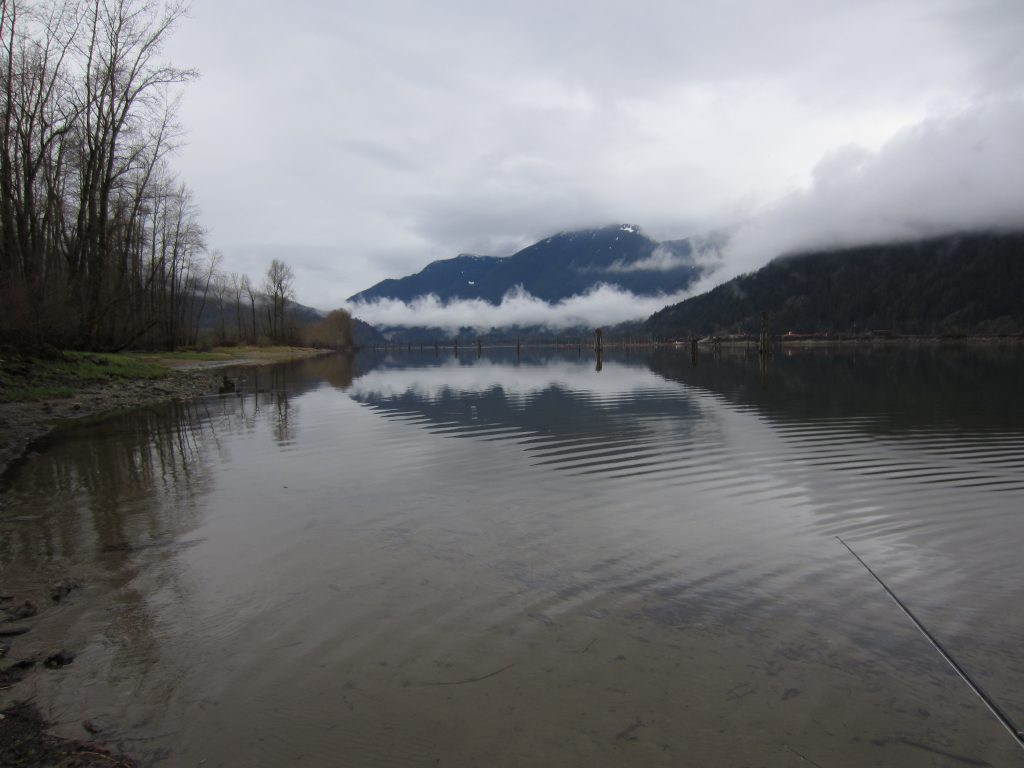
We mention it every time when talking about cutthroat fishing but the most effective method, by far, is simply covering ground and looking for cutties slashing at salmon fry and jumping. Fortunately for us, they’re really good at showing off and make it easy on us. The stretch between Kilby park to the Harrison River RV campground is always a great starting point for those unfamiliar with the system.
For fly guys, make sure to have either an intermediate sink line or a floating line with the right sink tips. Staple fly selections include weighted and weightless fry pattens, muddler minnow, and wooly buggers.
For gear guys, break out the ultralight gear and stock up on small spinners like Vibrax blue foxes or Mepps spoons in silver, gold, and brass.
It’s a great time to do some scouting as this fishery will be in full swing in 3-4 weeks.
Sterling Balzer
Stave River Fishing Report
In years past, the first week of April is the unofficial start of cutty season. There have been opportunities to target these aggressive trout over the past few weeks, but it’s only going to get better as water temperatures rise, and fry start to swim. While many fly anglers flock to the sloughs and backwaters of local rivers and streams, you can easily target these fish conventionally. Dick Nite’s, Mini G’s, or any spinner such as Mepps or Rooster tails can be an effective presentation while fry are on the menu. Fish them fast and high in the water column to illicit strikes from any hungry travelling schools of cutties.
Obviously, the main attraction for fly anglers is fry patterns. The key to fry patterns is to have a variety of different salmon species fry patterns and to read what’s on the menu. The same goes for these fry patterns as with conventional techniques – fish them fast and high in the water column. If you see activity on the surface (slashing / surfacing) fish these patterns as fast as possible. General consensus is if you think you’re stripping too fast – strip faster. Keep in mind that Fluorocarbon leaders are a must for this presentation to break the surface tension and have a natural movement for your fly.
Aidan Munro
STILLWATER FISHING REPORTS
Bass Fishing Update
It’s still a bit early and last weekend’s storm brought a cold front that really didn’t help matters, but one of the fisheries that will be hitting its stride in about a month is the Bass fishery. In saying that, this is a great time to start thinking about it and, at the very least, getting your gear ready. It is possible to catch them at all times of the year but as temperatures start to swing upward, they tend to get a lot more active. Thus, Bass fishing does tend to coincide with trout season in BC so it can be a fun alternative.
There are a million techniques to catch bass; some more technical than others, and some better suited to certain times of year than others. I tend to liken it to Salmon/Steelhead/Trout presentations and split them into reaction style lures and then baits, though “bait” is a term used loosely as it usually entails some sort of soft plastic that imitates their forage. Obviously, this is overly simplistic but I am a simple guy and to me, the easier the better.
Reaction style presentations do what their name suggests; they elicit a reaction strike. These lures include buzz baits, spinnerbaits, and to an extent frogs and poppers. These lures are generally big, flashy, and put off a lot of commotion. As such, they have a fairly large drawing radius and can be used to comb vast areas. As a search bait, they are highly effective in drawing out fish that are in a positive feeding mood and aggressive. This does mean, however, that in cold water you will need to slow down your presentation.
Forage style bait presentations focus more on a feeding response from a bass as opposed to a reaction. Anything that a bass can consider food falls under this category and includes worms, creature baits, craws, and swimbaits. A lot soft plastics fall under here and are usually rigged on an extra wide gap hook or, in the case of worms, rigged wacky style.
As mentioned, breaking the lures down into these two categories is overly simplistic. Some of them do cross over and can be used as both such as swimbaits.
Bass are highly susceptible to weather patterns, barometric pressure, and light penetration. None of these are mutually exclusive and learning to read the weather and adjusting your game plan can dictate your success. Not to make it even more difficult, but the time of year will also place these fish in certain spots. They are very much a calendar fish that can be predictable but not predictable at the same time, it all comes down to the weather patterns.
Looking ahead and making adjustments can save your fishing trip big time.
Now that the boring part is out of the way, let’s talk about gear!
First, you need to ask yourself what kind of bass fishing you want to be doing. Are you just going to be an open water kind of angler? Perfect. Light to medium powered rods (spinning or baitcasting, your choice) in the 6-7 ‘range spooled with anywhere between 8lb fluorocarbon to 20lb braid will suffice. You do not need to contend with much structure in this case and effectively can play a bass like you would any other fish.
Do you want to rip the baddest bass out of the most intense fallen tree or mat of pads ever? This is where the gear gets upscaled in a hurry. Most of my dedicated bass gear is baitcasting gear in medium-heavy to heavy power and the 6’6″ to 7’ range, with a couple of spinning rods of the same spec thrown into the mix. The corresponding reels are spooled with anywhere between 30lb-65lb braid. The crux of the matter is that this gear isn’t for “fighting” the fish. No, it isn’t sporting. You are trying to wrestle a big fish out of a really tight spot. Light rods don’t have the backbone to turn a big bass up towards the surface, and hence they run free in the structure and get you tangled up. Light line wraps up or gets frayed and snaps. Don’t trust me? I’ve had 15lb fluorocarbon leaders that I use with no issues on big salmon in fast water snap on a “measly” 3-pound bass in heavy, abrasive cover. It really does make that much of a difference when fishing in structure.
All that said, pick the setup that works best for you and your situation. In heavy structure or when fishing big reaction style lures, run braid all the way down. If you are fishing very clear water and there is little in the way of stuff to get snagged on, either run a lighter leader or just run straight mono/fluorocarbon from your reel. It’s all about the situation.
If you have read this far and still don’t believe me or don’t want to gain a whole new arsenal of gear or just want to catch one to check it off the bucket-list, try throwing a moderately sized spinner on a light or medium powered spinning rod. I’ve had a lot of fun catching fish up to 2.5 pounds doing this. It’s simple and doesn’t involve any new equipment. However, note that this limits the type of water you can fish drastically and doesn’t appeal to the bigger fish most of the time.
As per the aforementioned, it is a little early to get out for bass but, it is the time to start getting ready for it if one has an interest. If you would like to know more or want to get geared up come talk to me or any of the other guys at the shop.
Alex Au-Yeung
Stillwater Checklist – Getting Ready For The Season
Slowly but surely, the temperatures are rising, just like the fish in your dreams. Before you know it, the lakes around the province will be free from their frozen vaults and we will once again be able to unlock the secrets to our favorite still waters. However, before all that happens it is best to make sure that all of your gear is in working order. A pre-season checklist is great to ensure you have everything you will need to make your first lake trip of the year a successful one.
First off, you will want to take out your rods and reels and give them a thorough inspection. Hopefully you have done this already, because if you haven’t and you need to send things away for repair, you are most likely not going to have your gear for ice off. Most reel fixes we can do in store so bring them by for us to assess and hopefully, we can fix any issues while you shop. If you have a broken rod section you will be in for a long wait until you see that rod again, so you’re best to bring it in and get that warranty process (if applicable) started ASAP! If you lost a small chunk off the tip section, we can put a tip-top on there for you and you will be back in the game. Make sure to bring that rod in when your season is done so that we can warranty it in the offseason.
Organize your fly boxes! After a day or week of fishing and camping at the end of the season I know that my fly box is a mess and you know that I’m not organizing it when I get home from that trip. Take the time one evening and put everything in its place. Take an inventory of what you need and put that list INTO YOUR PHONE! We see you all in the shop and you’ve always forgotten to bring that pesky list that you wrote everything down on. You always have your phone with you so put it in there. I have a running list of needed fly-tying materials in my phone as well. When I run out of something, or if I notice I am low on a material while tying, I put it in there and then get it the next time I’m purchasing materials. Come on into the shop and grab what you need and check out the new patterns that we have in the bins. If you tie your own supply, hopefully you are already well underway. If you aren’t then come on into the shop as we just got a bunch of new materials from Semperfli as well as a bunch of pre-cut ASB and window tint!
Now is the time to pull out my odds and ends kit, if you don’t have one, now is the time to build one. I have a bag that I take out of my boat that’s full of all the odds and ends that I need for lake fishing. I keep this completely separate from my river gear; that way I can just grab it and go. I have a little kit that’s full of my split shots, swivels and indicators with extra pegs. A pouch filled with all of my homemade and indicator leaders, I take these out and make sure that they are all still good. If they aren’t, then I build and add which pre-made ones I need to the list in my phone. If they aren’t any good, then bring them into the shop and put them in our line recycling bin. I check all of my tippet and fluorocarbon spools to make sure they haven’t gone bad or to see if they are empty, add what you need to your list. I make sure that tools like forceps, zingers and bell sinkers with an earplug jammed in the eye are in there and at the ready. This is a great tool for getting depth when that sounder is acting up or if you don’t have a sounder at all. I double check my floatant levels for those days when we are lucky enough to fish dries for monsters on the flats. One of the most valuable tools for stillwater angling is a throat pump. They are easy to misplace so make sure that you know where yours is. Double check where your glass vials are as well. We have lots in stock so come and get them. Again, I keep all of this separate from my other fishing gear and it doesn’t have to be a complicated storage system either. It could be as simple as a Ziploc bag or as fancy as a Simms or Fishpond boat bag.
We have a good supply of everything that you need to get you geared up for success for your first stillwater trip of the year so come on into the shop, with your list, and we will help you knock everything off of that list!
Zach Copland


